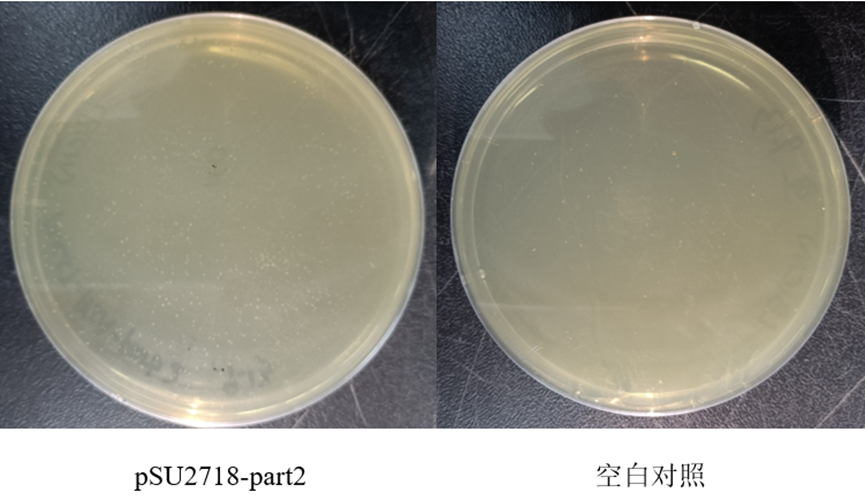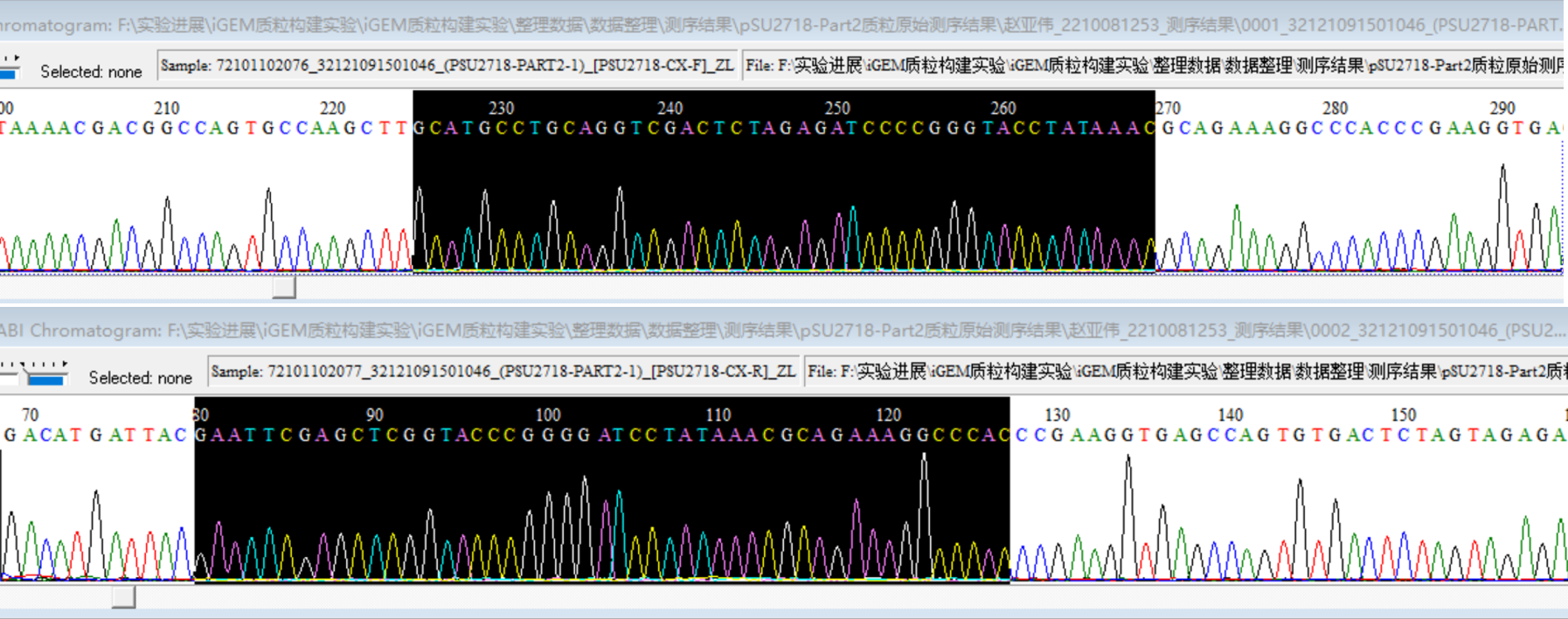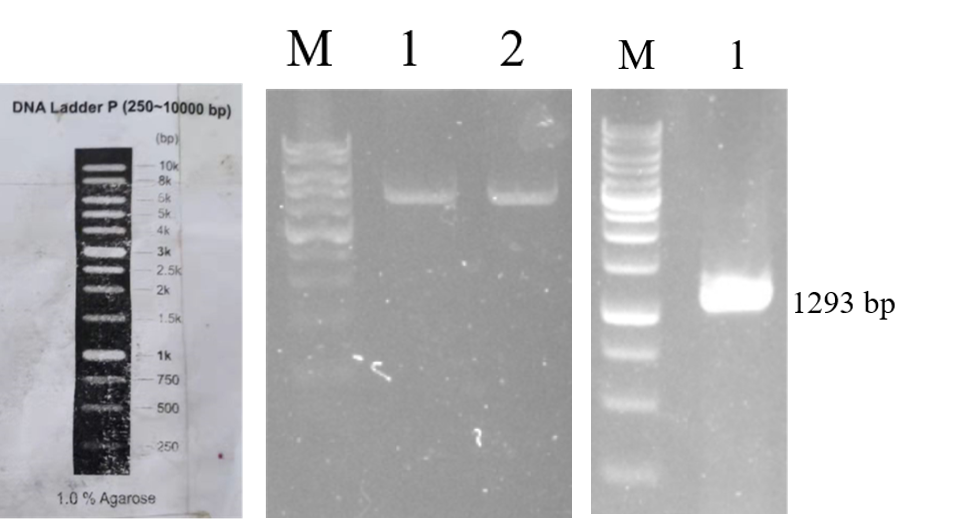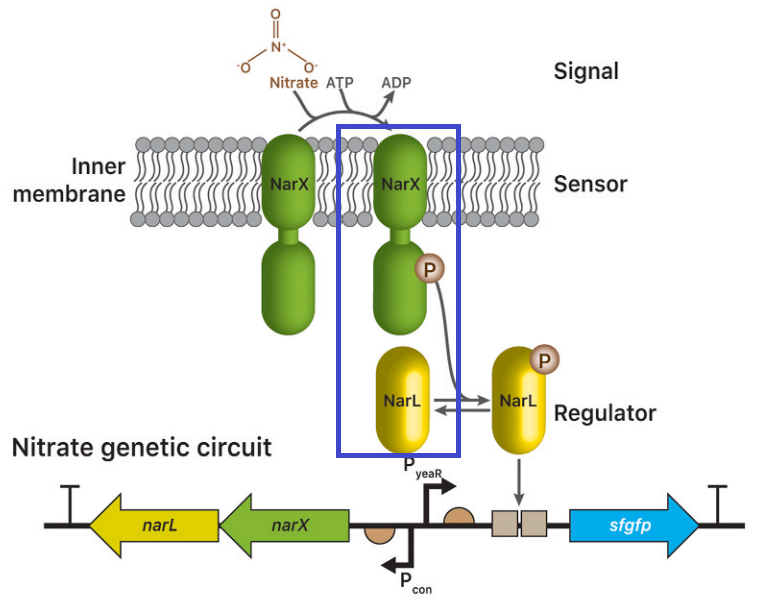Part:BBa_K3994008
PyeaR_HrpR
promoter
Profile
Name: PyeaR_HrpR
Base Pairs: 1223 bp
Origin: Synthetic
Properties: A coding sequence of HrpR protein.
Usage and Biology
Background
Inflammatory bowel disease (IBD) is a chronic intestinal inflammatory disease of unknown etiology, including ulcerative colitis (CD) and Crohn’s disease (CD). This chronic disease, which is prone to repeated deterioration, currently lacks unified diagnostic and treatment standards, and is posing a great threat to public health. Drug therapy (anti-inflammatory drugs) is the preferred treatment for IBD. However, studies in the past 10 years have found that 30-50% of IBD patients do not respond to anti-TNF treatment. In addition, after long-term use of anti-inflammatory drugs, the patient's intestinal microbial status changes over time, and the effect may be lost due to drug resistance. Therefore, we need to seek help from other treatments for IBD. HrpR protein binds to HrpS protein forming a complex and then triggering the transcription of promoter hrpL. This part can sense NO3- to release the substance R.
Construct design
HrpR is a key functional factor under PyeaR promoter (Figure 1). And this part is inserted into plasmid. Its sequence is shown in Figure 2
The profiles of every basic part are as follows:
BBa_K3994001
Name: HrpR
Base Pairs: 948bp
Origin: Pseudomonas syringae, genome
Properties: A coding sequence of HrpR protein
Usage and Biology
This codes for HrpR protein. HrpR protein binds to HrpS protein forming a complex and then triggering the transcription of promoter hrpL. This functions like a AND logic gate.
BBa_K3994000
Name: PyeaR
Base Pairs: 100bp
Origin: synthetic
Properties: A coding sequence of promoter ttB344.
Usage and Biology
This is a sequence of PyeaR. It is a promoter. In our group, HrpR is under this promoter.
Experimental approach
Recombinant Plasmid Construction
Lane 1 and 2: Plasmid pSU2718-p15A digested by Xba1 and BamH1.
Lane 3: Part 2, PttB344_HrpS_PJ23105_ttrR, got by PCR method with size of 2060bp.
This step is used to get the plasmids pSU2718-p15A digested by enzyme Xba1 and BamH1and gene PttB344_HrpS_PJ23105_ttrR by PCR method for later in the process. Therefore, channel 1 and 2 were plasmids pSU2718-p15A digested by enzyme Xba1 and BamH1. And channel 3 were gene PttB344_HrpS_PJ23105_ttrR got by PCR. Clean-up the product to obtain pSU2718-p15A backbone and PttB344_HrpS_PJ23105_ttrR-fragment. T4 DNA ligase is used to connect pSU2718-p15A backbone and PttB344_HrpS_PJ23105_ttrR-fragment to get plasmid pSU2718-part2.
Lane 1: Plasmid pSU2718-p15A digested by EcoR1.
Lane 2 to 5: Recombinant plasmid pSU2718-part2 digested by EcoRI. We got two bands with size of 2803bp and 1544bp. The results show that we got the correct plasmid. And the plasmid was sent to sequence.
Sequencing feedback shows we have obtained the correct plasmids which is consistent with their DNA profiles.
Middle:
Lane 1 and 2: Plasmid pSU2718-part2 digested by HindIII.
Right:
Lane 1: Part 1, PyeaR_HrpR, got by PCR method with size of 1293bp. This step is used to get the plasmids pSU2718-part2 digested by enzyme and gene PyeaR_HrpR by PCR method for later in the process. Therefore, channel 1 and 2 (Middle) were plasmids pSU2718--part2 digested by enzyme HindIII. And channel 1 (Right) was gene PyeaR_HrpR got by PCR. Clean-up the product to obtain pSU2718-part2 backbone and PyeaR_HrpR-fragment.
T4 DNA ligase is used to connect pSU2718-part2 backbone and PyeaR_HrpR-fragment to get plasmid pSU2718-part2-part1.
Lane 1: Recombinant plasmid pSU2718-part2-part1 without enzyme digestion.
Lane 2: Recombinant plasmid pSU2718-part2-part1 digested by EcoR1.
The result shows that we got the correct plasmid. And the plasmid was sent to sequence.
Sequencing feedback shows we have obtained the correct plasmids which is consistent with their DNA profiles.
Proof of function
Attempt 1
Sample 1: NO3- + S4O62-
Sample 2: S4O62-
Sample 3: NO3-
Sample 4: Blank Control
As shown above, there is obvious fluorescence in sample 1 and sample 2; for sample 3 and sample 4, there also a slight fluorescence produced in the tubes. In order to scientifically quantify the result, we used ELIASA to read the accurate fluorescence intensity, respectively.
According to the histogram above, we can see that Sample 1 (NO3-+ S4O62-) presents obvious higher fluorescence intensity than the rest three samples which means our design working. But we do realize that Sample 2 (S4O62-) also presents fluorescence than the blank control which confused us a lot. According to our design, if we only add S4O62- without NO3-, this AND gate wouldn’t allow to pass into the reporter (Part 3) as there is a closed door of the NO3- sensor (Part 1). Therefore, we thought there was something wrong in Part 1.
In order to figure out the reason, we did several literature research and find out that in Part 1 we didn’t build the NarX-NarL two-component regulator (Figure 13), which shall be the first one to sense nitrate and that is why Part 1 didn’t work fine as we expected.
Ref. Woo, Seung-Gyun, et al. "A designed whole-cell biosensor for live diagnosis of gut inflammation through nitrate sensing." Biosensors and Bioelectronics 168 (2020): 112523.
References
1 CDC -What is inflammatory bowel disease, available at: https://www.cdc.gov/ibd/what-is-ibd.htm
2炎症性肠病 百度百科available at: https://baike.baidu.com/item/%E7%82%8E%E6%80%A7%E8%82%A0%E7%97%85/5296499?fr=aladdin
3 Data and Statistics Inflammatory Bowel Disease (IBD) in the United StatesAvailable at: https://www.cdc.gov/ibd/data-statistics.htm
4. Wang, Baojun, et al. "Engineering modular and orthogonal genetic logic gates for robust digital-like synthetic biology." Nature communications 2.1 (2011): 1-9.
Sequence and Features
- 10COMPATIBLE WITH RFC[10]
- 12COMPATIBLE WITH RFC[12]
- 21COMPATIBLE WITH RFC[21]
- 23COMPATIBLE WITH RFC[23]
- 25INCOMPATIBLE WITH RFC[25]Illegal NgoMIV site found at 669
Illegal AgeI site found at 142
Illegal AgeI site found at 256
Illegal AgeI site found at 262
Illegal AgeI site found at 901 - 1000COMPATIBLE WITH RFC[1000]
| None |















